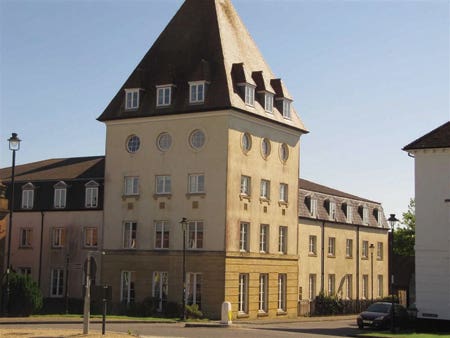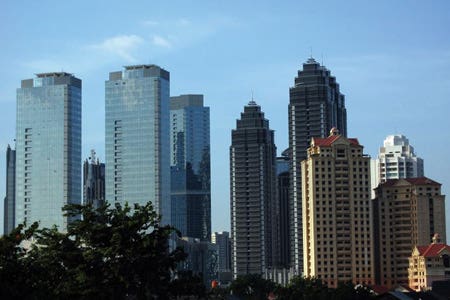
Features
Book Review: The Globalization of Modern Architecture


The Globalization of Modern Architecture: The Impact of Politics, Economics, and Social Change on Architecture and Urban Design Since 1990
by Robert Adam
Cambridge Scholars Publishing, Newcastle upon Tyne, UK; 2012
338 pp; hardcover; Over 50 b&w images; $67.99
ISBN 978-1-4438-3905-1
Reviewed by Clem Labine
Robert Adam, one of the planet's leading traditional architects, has written a remarkable book. As architect, he is notable not only for the large body of outstanding traditionally-inspired architecture his firm has created, but also for the intelligence and energy he has brought to debates with the Modernists who control the European architectural establishment. His previous written and verbal disputations make this new book all the more remarkable because its pages are filled not with Adam's own opinions and advocacy, but rather with an objective in-depth analysis of the political, social and economic forces that have shaped global architecture in the last 25 years.
Adam sets out to answer this basic question: Why does contemporary world architecture look the way it does? To settle this issue, he doesn't fall back on the typical abstract babble that constitutes so much of today's architectural commentary. Rather, taking as his thesis that design inevitably follows social, political and economic changes, Adam looks for the fundamental forces that are shaping modern architecture. He doesn't bring to the task any overblown concept of the architect-as-artist who molds contemporary culture, instead asserting: "No major social changes can be traced back to architecture."
Adam focuses on globalization as the most powerful single force shaping our built environment – and untangles the various strands that tie together our interconnected global economy. His method was to read great chunks of the voluminous literature on globalization produced by scholars in sociology, economics, history and anthropology. (I counted 523 literature citations sprinkled throughout the text – plus lots of charts and graphs.) Adam selected 1990 as the starting point since that's when Russia, India and China joined the world economic system and created the global market we know today.
Homogenization & Reflexive Modernism
Since the economies of Europe and North America were dominant at the start of the global era, it was only logical that up-and-coming cities of Asia and the Middle East would emulate conditions in the North Atlantic financial capitals. Economic development czars in on-the-make cities recognize that they are engaged in worldwide competition to attract global capital and transnational corporations. One way to do this is to make jet-setting business people feel they are in familiar state-of-the-art surroundings – no matter whether they are in New York, Tokyo, Shanghai or Doha. As a result, the architecture being adopted by these new cities is what Adam refers to as reflexive Modernism.
Adam shows that a universal way of living is unfolding in these universal trading cities: Globalization of information and technology is leading to a consumer culture in which clothing, housing, entertainment – and architecture – are developing a similar look. The resulting default Modernism has made "non-places" out of the world's major cities.
Homogenized reflexive Modernism, however, does present problems for marketing people charged with creating a "brand" for their city. How can a city appear unique if it looks like every other city in the world? Dazzled by the supposed success of the Bilbao effect, many planners see the "iconic building" as a quick, silver-bullet way to establish a city's identity.
Coupled with the desire for iconic buildings comes the cult of international star architects of the likes of Rem Koolhaas, Daniel Libeskind and Zaha Hadid. Having built their own personal brand, these starchitects have the ability to transfer their celebrity to the structures they design. It's only in the book's section on starchitects that Adam's personal feelings peek through. He notes acidly that architectural icons ". . . were conceived as sculptural form first and buildings second which, when combined with extreme geometrical complexity, made them hard to build, difficult to budget and frequently more expensive than their original cost estimates."
Offsetting the drive for universal conformity has been the desire to retain local identity and its appeal for both residents and international tourists. Studies show that tourists are often searching for "authentic experiences" and localized culture. The very act of creating cities that make international business people feel at home in generic non-places also creates environments that repel heritage tourists. The billions of dollars available in heritage tourism is the thing that should give greatest encouragement to preservationists and advocates for traditional architecture.
Throughout the book lurks the question of what is getting built in China. For 20 years, China has been a major source of work for North Atlantic architectural firms and their interpretations of Modernism. But as China's economic power grows, and as Chinese architects absorb the lessons of universal Modernism, Adam leaves us to ponder what China will build in the next decade, who will design it, and what its global impact will be.
Adam's opus is not a coffee-table book (the black-and-white images are not particularly dramatic) nor is it a quick read. But for anyone who wants a keen understanding of global dynamics and why the built environment looks the way it does, I don't know a better book to recommend.
Clem Labine is the founder and editor emeritus of Traditional Building. He is also founder of Period Homes, and The Old-House Journal magazines. He is currently an independent consultant specializing in website optimization and marketing.








